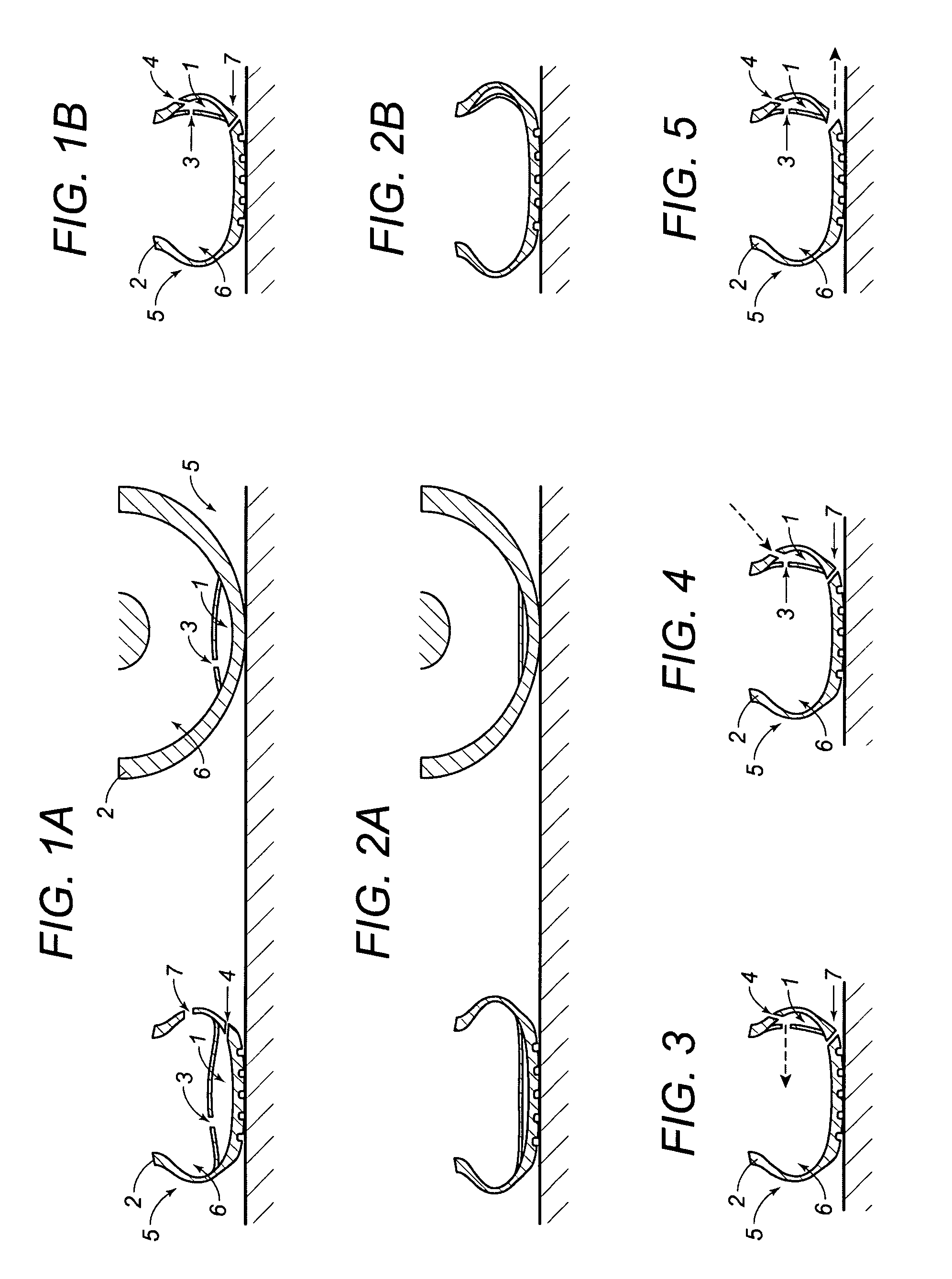Device for monitoring maintenance and adjustment of pressure in a tire
a technology for monitoring and maintenance, applied in vehicle tyre testing, roads, instruments, etc., can solve the problems of user failure to observe, inability to ensure the optimum inflation of tires, and time-consuming inflation methods, so as to achieve simple design, improve safety, and avoid energy supply.
- Summary
- Abstract
- Description
- Claims
- Application Information
AI Technical Summary
Benefits of technology
Problems solved by technology
Method used
Image
Examples
example 1
[0049]FIG. 1a) shows a tire 2, fitted with the device for monitoring, maintenance and adjustment of pressure in the tire 2. The device consists of a chamber 1, one wall of which is a part of the wall of the tire 2 tread, while the chamber 1 is connected through one internal valve 3 to the inside space 6 of the tire 2, it is then connected with one external valve 4 with the outside environment 5.
[0050]The chamber 1 volume is at its maximum at the moment when no load deforming the tire 2 caused by rolling of the tire 2 is applied. The chamber 1 is filled by the air from the outside environment 5 through the external valve 4.
[0051]When the tire 2 starts rolling on the road and is deformed at the place where the chamber 1 is located, higher pressure is generated in the chamber 1 than in the inside space 6 of the tire 2. The chamber 1 volume is reduced. The pressure is defined by unloaded volume of the chamber 1 or its part and volume of chamber 1 or its part when loaded, multiplied by t...
example 2
[0055]FIG. 1b) shows a tire 2, fitted with the device for monitoring, maintenance and adjustment of pressure in the tire 2. The device consists of a chamber 1 located in the case at the side of the tire 2. The chamber 1 is connected with the inside space 6 of the tire 2 through one internal valve 3, with the outside environment 5 through one external valve 4 and the inside space 6 of the tire 2 is connected with the outside environment 5 through the third valve 7. The tire 2 deformed by the load is shown in FIG. 3. The pressure inside the chamber 1 is higher than inside space 6 the tire 2, the internal valve 3 is open and the gas from the chamber 1 flows to the inside space 6 of the tire 2. The gas flow direction is indicated by a broken arrow.
[0056]The tire 2 during finishing the load deformation or after the load deformation is shown in FIG. 4.
[0057]The external valve 4 is open and the gas from the outside environment 5 flows to the chamber 1. The gas flow direction is indicated b...
example 3
[0059]A convenient situation is, when the chamber 1 is longer then the length of the optimum contact surface of the tire 2, e. g. the length of the chamber 1 is a half of the tire 2 perimeter.
[0060]The chamber 1 is divided during the load deformation into two parts, the first one, where the load deformation has already occurred, and the second one, where the deformation is just under way. The walls of the chamber 1 are pressed hermetically to each other during the course of the load deformation of both the above parts of the chamber 1 and compressed gas is accumulated in the second part of the chamber 1. The gas pressure in the second part of the chamber 1, where the hermetic contact has not occurred yet increases proportionally to the decrease of the volume of the part of the chamber 1.
[0061]A chamber 1 designed this way prevents accidental or inconvenient inflation of the inside space 6 of the tire 2 if the load deformation is caused e. g. by a stone.
[0062]Suitable length and-suit...
PUM
 Login to View More
Login to View More Abstract
Description
Claims
Application Information
 Login to View More
Login to View More - R&D
- Intellectual Property
- Life Sciences
- Materials
- Tech Scout
- Unparalleled Data Quality
- Higher Quality Content
- 60% Fewer Hallucinations
Browse by: Latest US Patents, China's latest patents, Technical Efficacy Thesaurus, Application Domain, Technology Topic, Popular Technical Reports.
© 2025 PatSnap. All rights reserved.Legal|Privacy policy|Modern Slavery Act Transparency Statement|Sitemap|About US| Contact US: help@patsnap.com



